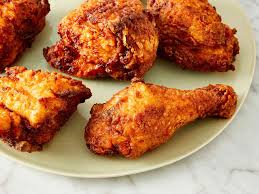The Culinary Odyssey of Pancakes: Ancient Breakfast
Millions around the world enjoy pancakes that are a common breakfast food. They are a great way to begin the day because they are soft, fluffy, and multipurpose. The discussion includes the development, variations, and cultural importance of pancakes, several typical questions, and a guide to making pancakes at home.

How Did Pancakes Come to Be? A Short History
Pans around the globe – the evidence can be found in ancient civilizations all over. It is known that the process of making the first pancakes probably already 2500 years ago in ancient Greece and Rome. There were baked pancakes – the first pancakes – flat cakes made from wheat flour with olive oil, honey, and milk. And as the centuries crossed into modern times, many people worldwide began eating the batter across the country, making sure to add their uniqueness. Because of this, pancakes became distinct in their own ways. Each culture put its unique touch to pancakes, including folded pancakes, liquid pancake batter, sweet pancakes, sour cream pancakes, egg pancakes, and more.
They later shifted to medieval Europe where people started using them in crazy sales to get rid of dairy before Lent began. In America, they became known as hotcakes or flapjacks, used in breakfast, and flourished due to both their simple preparation and low prices.

Pancake Varieties Across the Globe
American pancakes are not the only pancakes that exist. Other countries have their own variations:
American Pancakes – large and fluffy pancakes served with butter and heaps of maple syrup
French Crêpes – crepes filled with sweet or savory pockets that are thinner and more delectable.
Japan Soufflé Pancakes:
Light as a cloud in the sky, the pancakes are incredibly fluffy, and yes, I mean fluffy.
Pancake Varieties All Over the Planet Every pancake lover knows the excitement that raising the edges of the pancake and drizzling it with syrup brings. But believe it or not, pancakes come in different shapes and with unique stuffing as well. American Pancakes: Probably the most basic as they are thick and fluffy. They are also popular served with butter and syrup. French Crêpes: Palestinians made it out to be thin. Also, it is filled with sweet or savory. Russian Blinis: used to be larger, but now they serve it as a mini version, just the size of a small puck.
Japanese Soufflé Pancakes: Approach battle-ready pancake versions, but in the end are small fluffy Japanese pancakes that are light as a feather. Indian Dosa: Pancakes which are savory and are made as a result of fermented lentils and they are thin looking. How to Make Perfect Pancakes at Home Making pancakes are often easier said than done. Here’s all the preparation required. Ingredients: These include flour, baking powder, sugar, salt, milk, eggs, and butter. Mixing: Treat folding and mixing of batter and pancake separately in which pouring the batter isn’t too dense, so we mix just the basics. Cooking: Here the pancake batter must be kept aside in a pan.
Cunclusion
A gritty part for how a pancake should be looking. Flipping: Wait till the entire area of the batter spans and only decided when the corner is starting to rise. Tip: Airy pancakes have been spoiled for a very long time since chefs or mothers could let batter sit for a few minutes first. Healthier Pancake Alternatives Pancakes like any other dish can be substituted for their healthy variants which change the taste slightly. For example, In terms of healthy pancakes, whole wheat or almond flour pancakes should be preferable.
Natural sweeteners such as ma or honey can replace sugar.









